Learning guitar chords can feel like unlocking a secret language, and the Em Chord Guitar is one of the first and most valuable words you’ll learn. This minor chord is not only easy to play for beginners but also incredibly versatile, appearing in countless songs across genres. This guide will take you through everything you need to know to master the Em chord, from finger placement to practice tips and even how it relates to other chords.
Getting Your Fingers in Position for the Em Chord
The E minor (Em) chord is celebrated for its simplicity. You only need to use two fingers to form this chord, making it a fantastic starting point for new guitarists. Here’s a step-by-step approach to get your fingers in the right place:
- Locate the Second Fret: Find the second fret on your guitar. It’s the metal bar two frets away from the headstock.
- Place Your Middle Finger (2nd Finger): Put your middle finger on the 5th string (A string) at the second fret. Press down just behind the metal fret for a clear sound.
- Position Your Ring Finger (3rd Finger): Place your ring finger on the 4th string (D string) at the second fret. Again, ensure you’re pressing just behind the fret.
- Strum All Six Strings: Once your fingers are in place, strum all six strings of your guitar downwards. You should hear a clear, resonant Em chord.
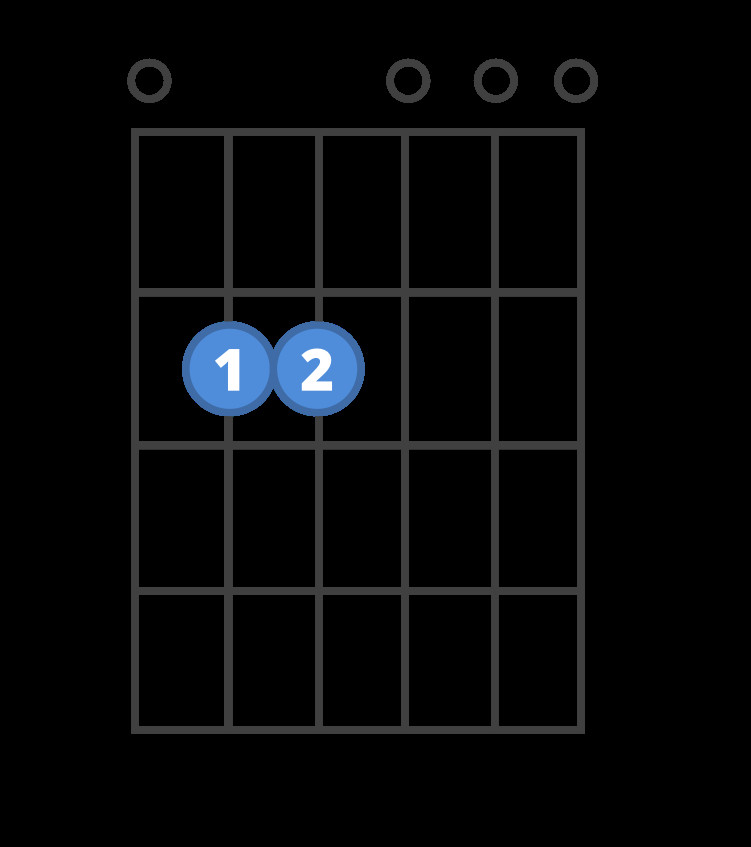 Em chord diagram for guitar with finger positions on the fretboard.
Em chord diagram for guitar with finger positions on the fretboard.
Many beginners wonder if they can use their index and middle fingers instead. While technically possible, using your middle and ring fingers as described above offers a significant advantage. Keeping your index finger free makes transitions to other common chords like C major, A minor, or D major much smoother and faster. This efficient finger positioning is a stepping stone to fluid chord changes in your playing.
Why the Em Chord is a Cornerstone for Beginners
The Em chord isn’t just easy to learn; it’s also a fundamental building block in your guitar journey. Here’s why mastering the Em chord early on is beneficial:
- Simplicity Breeds Confidence: Successfully learning the Em chord quickly boosts your confidence and encourages you to tackle more chords.
- Versatility in Music: The Em chord is a staple in numerous genres, from pop and rock to folk and blues. Knowing Em opens up a vast repertoire of songs to play.
- Foundation for Chord Progressions: Em often appears in beginner-friendly chord progressions. Learning it allows you to start playing simple songs and understand how chords work together.
Em Chord and E Major Chord: Spotting the Difference
If you’re already familiar with the E major chord, you’re in for a treat. The Em chord is incredibly similar, with just a subtle but significant difference in finger placement and sound.
Let’s compare:
Em Chord
 Em chord diagram for guitar with finger positions on the fretboard.
Em chord diagram for guitar with finger positions on the fretboard.
E Major Chord
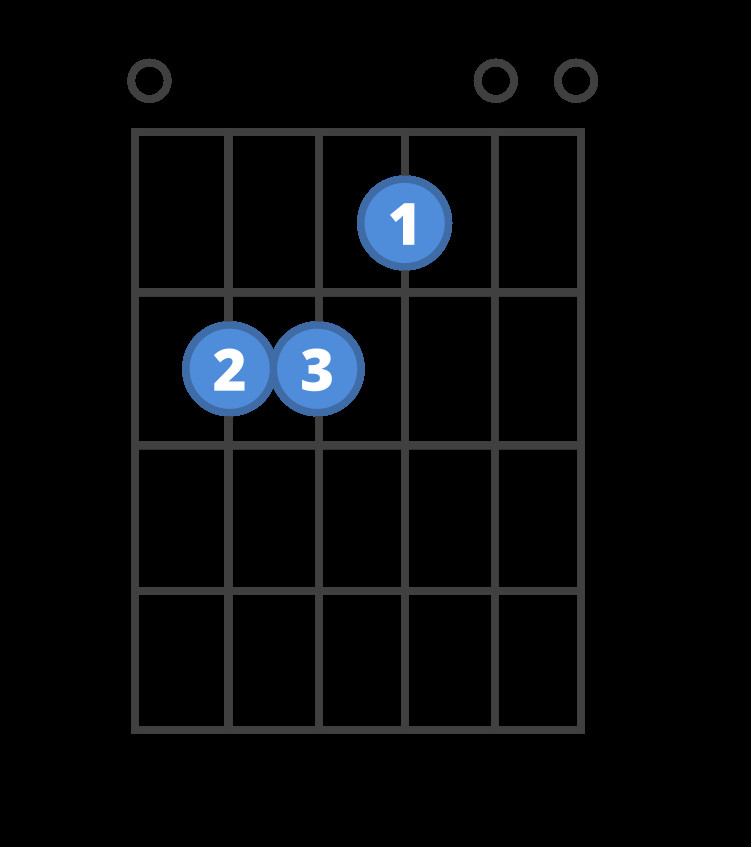 E major chord diagram for guitar, illustrating the difference from Em chord.
E major chord diagram for guitar, illustrating the difference from Em chord.
The diagrams highlight that the only variation is on the 3rd string (G string). In the E major chord, your index finger presses down the G string at the first fret, raising the note a half step to G#. This seemingly small change transforms the chord from minor to major.
A Touch of Music Theory (Optional):
The difference lies in the interval called the third. Major chords have a major third interval, while minor chords have a minor third interval. In the E major chord, the G# creates a major third from the root note E. In the Em chord, the natural G creates a minor third, giving it that characteristic minor sound – often described as sadder or more melancholic compared to the bright and happy sound of a major chord.
Effective Practice Techniques for the Em Chord
Consistent practice is key to making the Em chord sound effortless. Here’s a practice technique to help you memorize the chord shape and transition smoothly:
The On-Off Drill:
- Form the Em Chord: Place your fingers in the Em chord shape.
- Strum and Count: Strum the chord four times, counting to four with each strum.
- Release and Count: Take your fingers off the strings completely for four counts.
- Repeat: Immediately place your fingers back into the Em chord shape and repeat the strumming and release cycle.
This drill helps your muscle memory develop the Em chord shape. The pauses between repetitions give you time to consciously place your fingers correctly, reinforcing the shape in your mind and hands.
Chord Switching Practice:
Once you’re comfortable with the On-Off Drill, challenge yourself by switching between the Em chord and another chord. A great chord to start with is the G major chord:
Em Chord
 Em chord diagram for guitar with finger positions on the fretboard.
Em chord diagram for guitar with finger positions on the fretboard.
G Major Chord
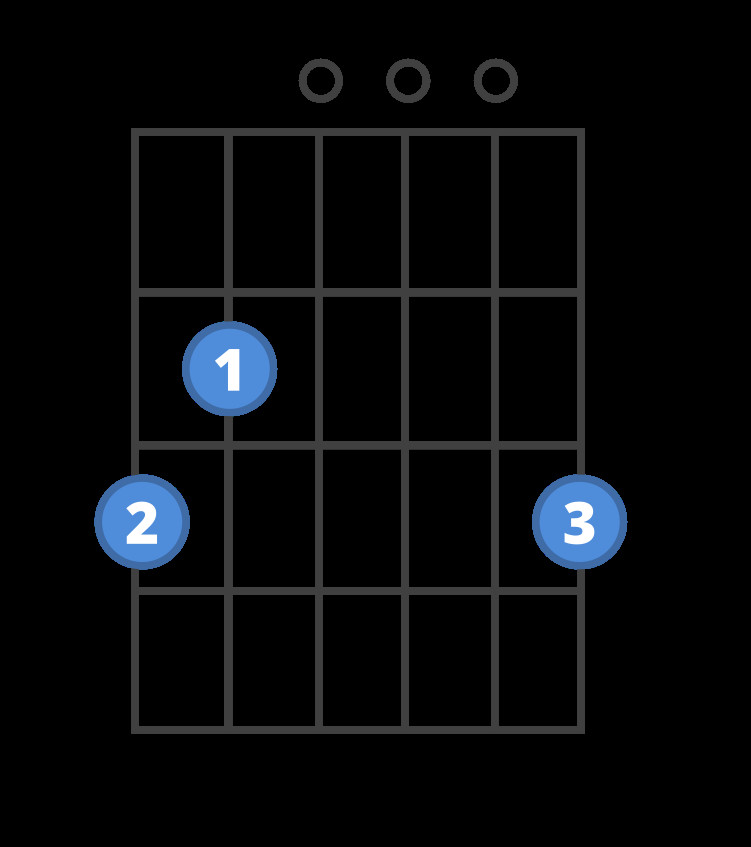 G major chord diagram for guitar, used in Em chord practice and songs.
G major chord diagram for guitar, used in Em chord practice and songs.
Practice switching back and forth between Em and G, maintaining a steady rhythm. This exercise builds your chord transition speed and accuracy, essential skills for playing songs.
Songs to Get Started With
The Em chord is a gateway to playing countless songs. Here are a few common chord progressions that feature the Em chord, perfect for playalong practice:
- Em – C – G – D: This classic progression is incredibly common and forms the basis of many popular songs.
- Em – G – C – D: Another widely used progression that sounds great and is easy to learn.
Practice these progressions, strumming each chord for four beats before moving to the next. You can find backing tracks online in the key of Em to play along with and make your practice sessions more engaging.
Expand Your Chord Vocabulary
Once you’ve confidently mastered the Em chord, you’ll naturally want to explore more chords that complement it and broaden your musical horizons. Here are a few chords that sound fantastic with Em and are commonly used together:
-
G Major
-
C Major
-
D Major
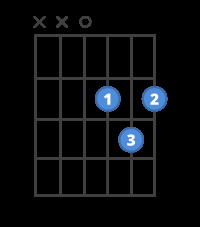 D major guitar chord diagram, commonly used with the Em chord.
D major guitar chord diagram, commonly used with the Em chord. -
A Minor
And if you’re looking to learn more easy minor chords, these are great next steps:
Dive Deeper with ChordBank Resources
Ready to explore more guitar chords, scales, and lessons? ChordBank offers a wealth of resources to support your musical journey:
[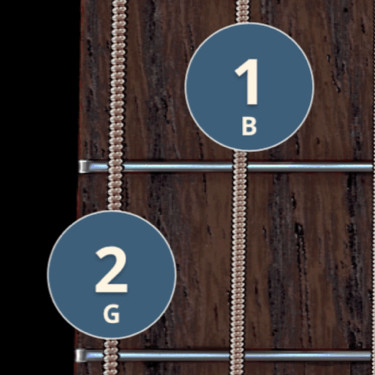
Chords »
Explore thousands of guitar chords on ChordBank.](/guides/chords/)
[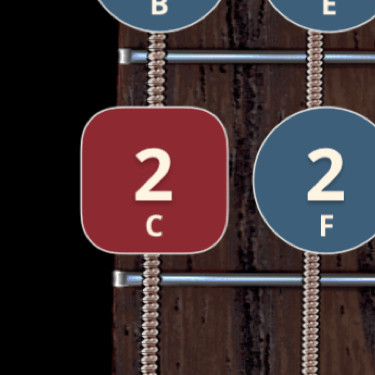
Scales »
Practice guitar scales, major, minor, and more with ChordBank.](/guides/scales/)
[
Lessons »
Take guitar lessons from professional musicians on ChordBank.](/guides/lessons/)
[
Metronome »
Use ChordBank’s metronome to improve your timing.](/guides/metronome/)
[
Tuner »
Tune your guitar easily with ChordBank’s tuner.](/guides/tuner/)
[
Reverse Chord Finder »
Discover new guitar chords with ChordBank’s reverse chord finder.](/guides/reverse/)
[
Backing Tracks »
Jam with guitar backing tracks in any key on ChordBank.](/guides/backing-tracks/)
[
Saved Chords »
Save and organize your favorite guitar chords with ChordBank.](/guides/saved/)
[
Flashcards »
Practice cards with AI Flashcards that listen](/guides/flashcards/)
To further enhance your learning experience with the Em chord:
[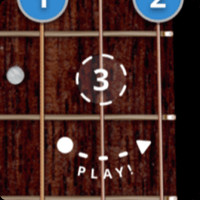
Start playing the Em chord »
Chord Coach](https://www.chordbank.com/o/chordtraining?gtx=Em)
[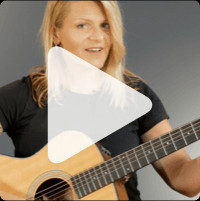
Learn the Em chord »
Video – 0:50](https://www.chordbank.com/o/rkvid?vid=Em)
Anna Freitas (instructor) holds a B.A. from Berklee College of Music and is a seasoned guitar educator.
Mastering the Em chord is a significant step in your guitar journey. With consistent practice and the resources available at ChordBank, you’ll be playing songs and exploring new musical possibilities in no time. Keep practicing, and enjoy the rewarding process of learning guitar!

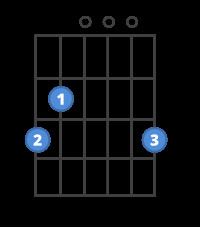 G major guitar chord, a complementary chord to Em.
G major guitar chord, a complementary chord to Em.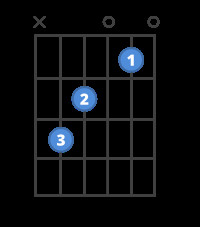 C major guitar chord diagram, often played with Em.
C major guitar chord diagram, often played with Em.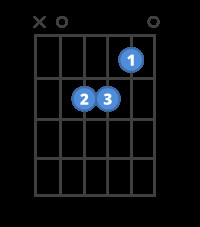 A minor guitar chord diagram, sounds great with Em.
A minor guitar chord diagram, sounds great with Em.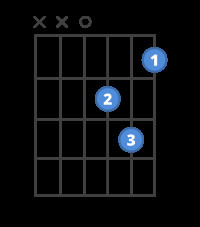 D minor guitar chord diagram, another easy minor chord for beginners.
D minor guitar chord diagram, another easy minor chord for beginners.